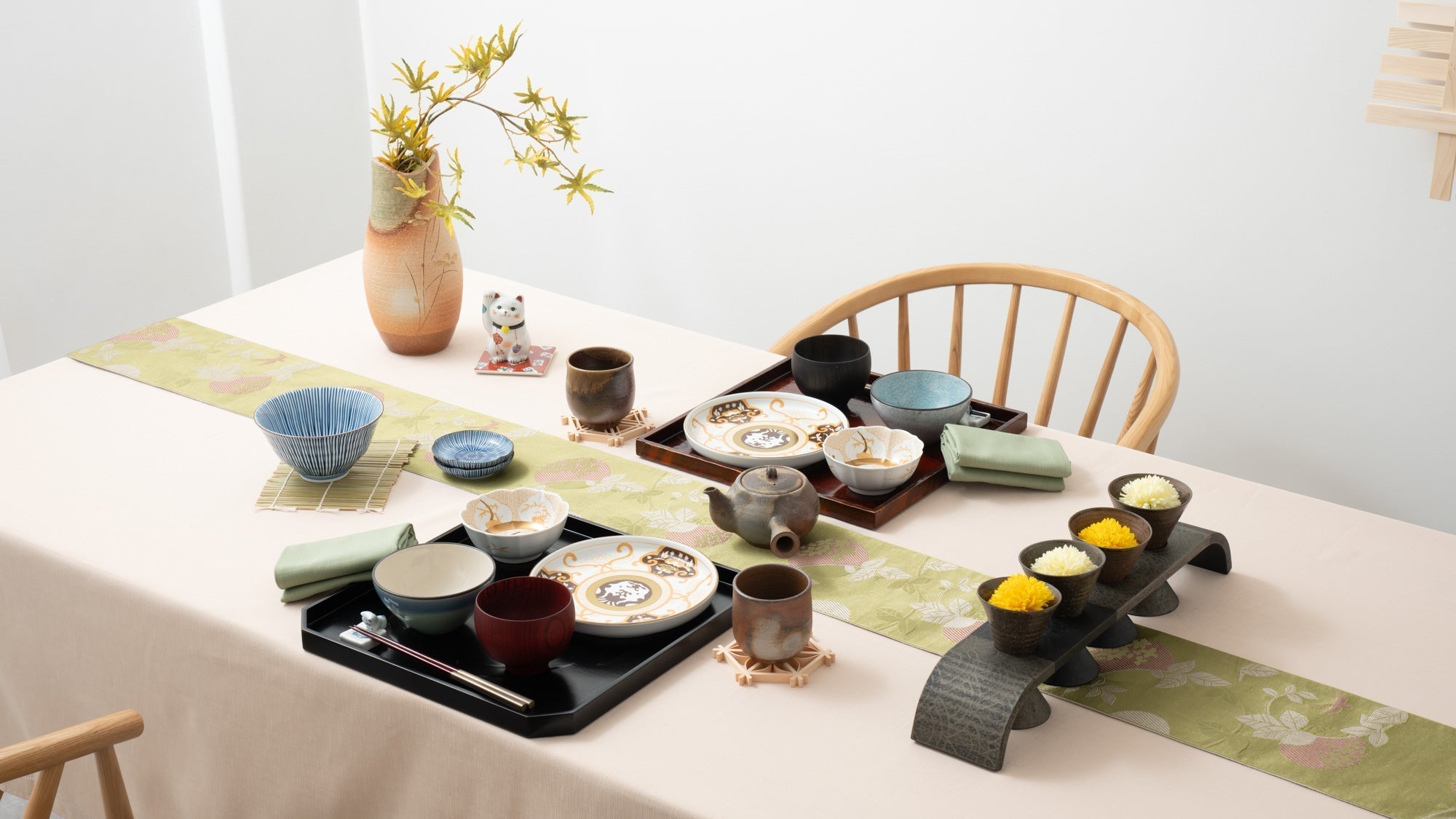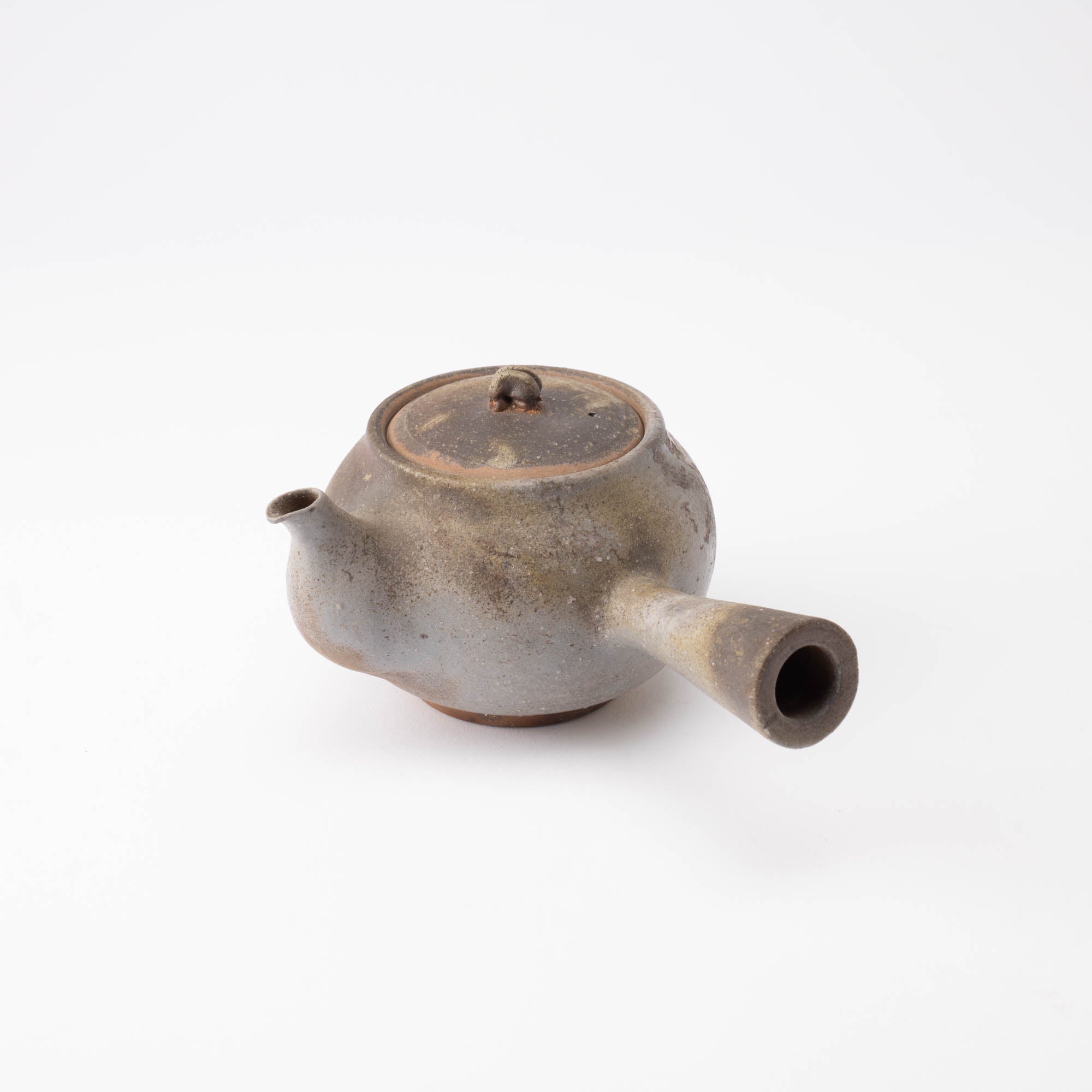
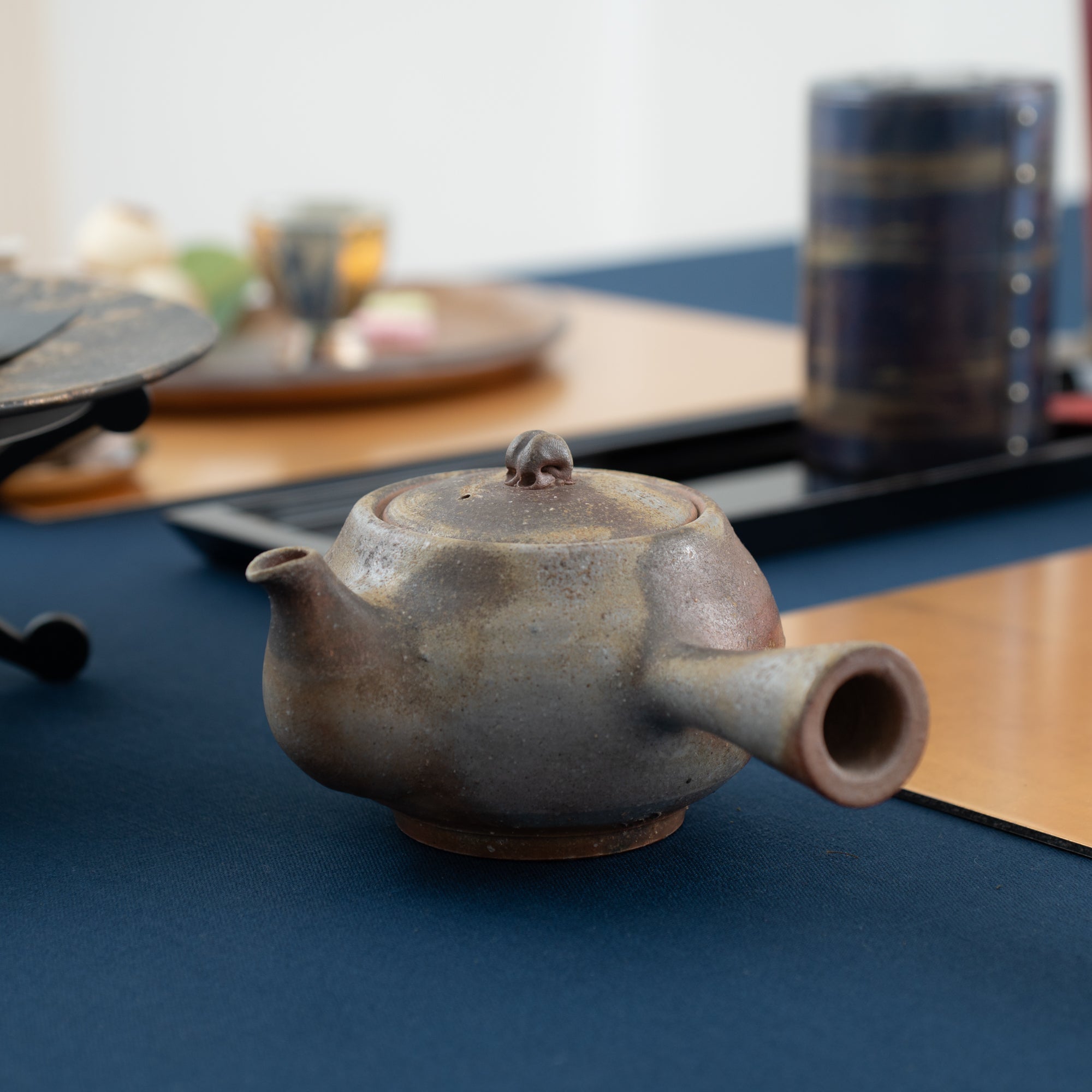
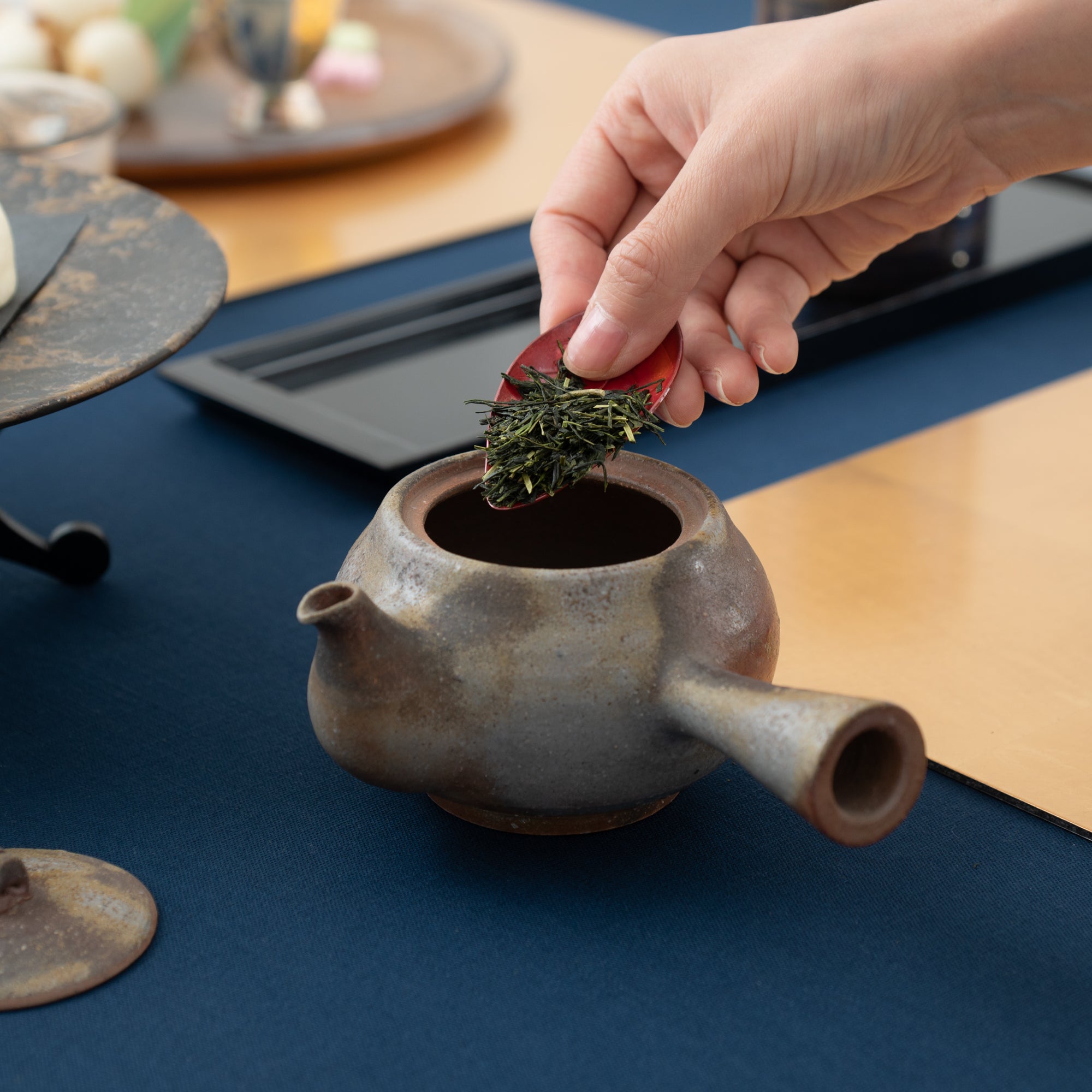
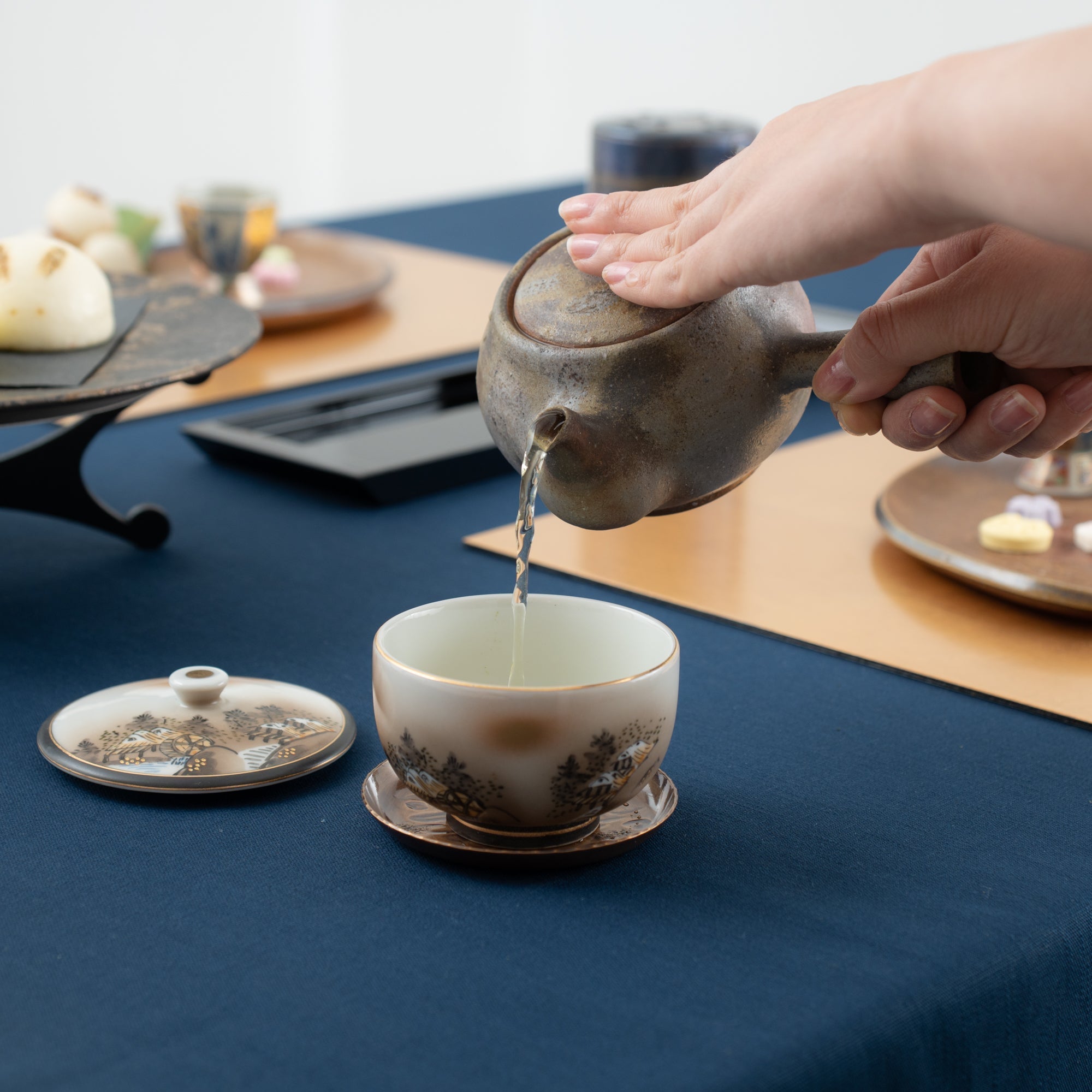
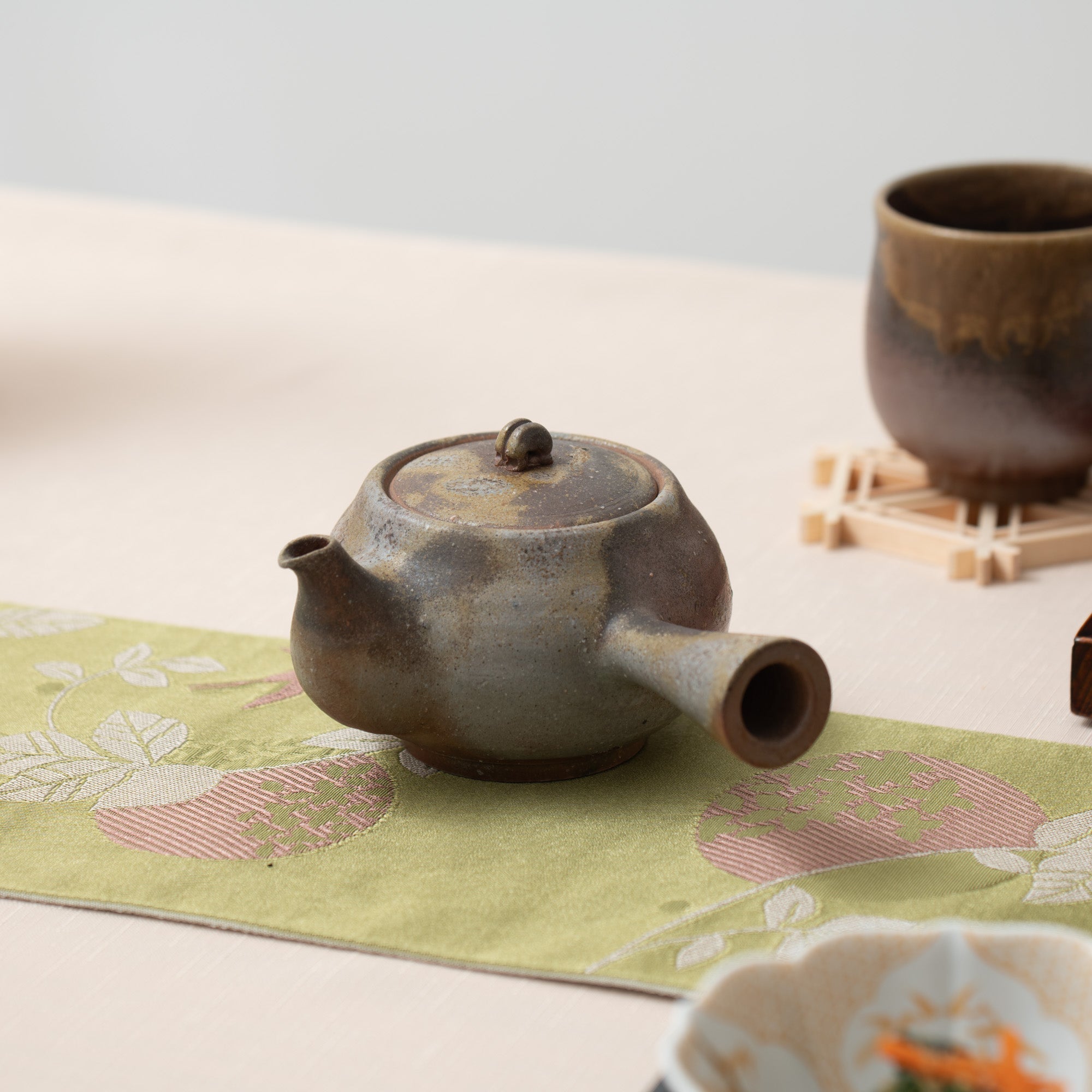
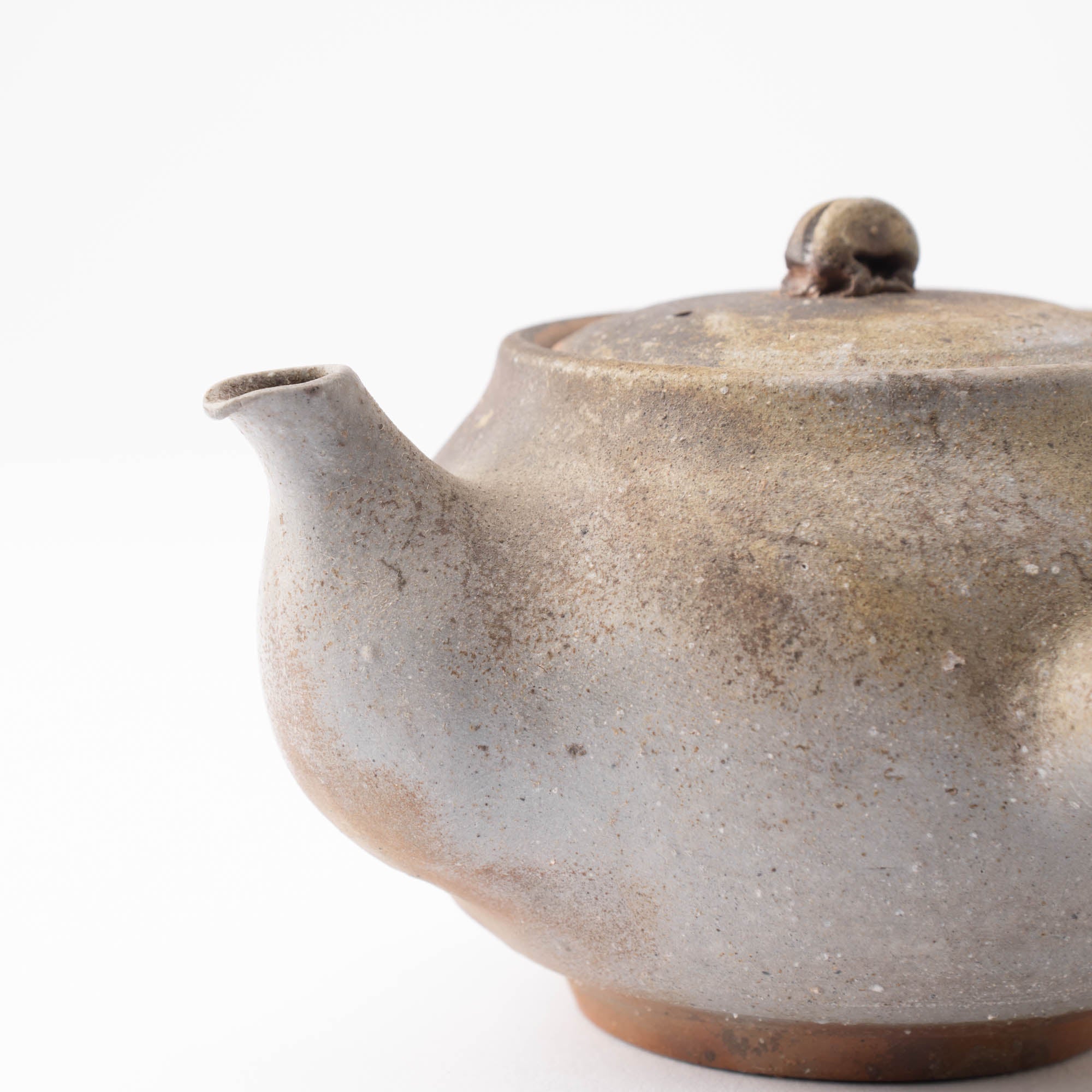
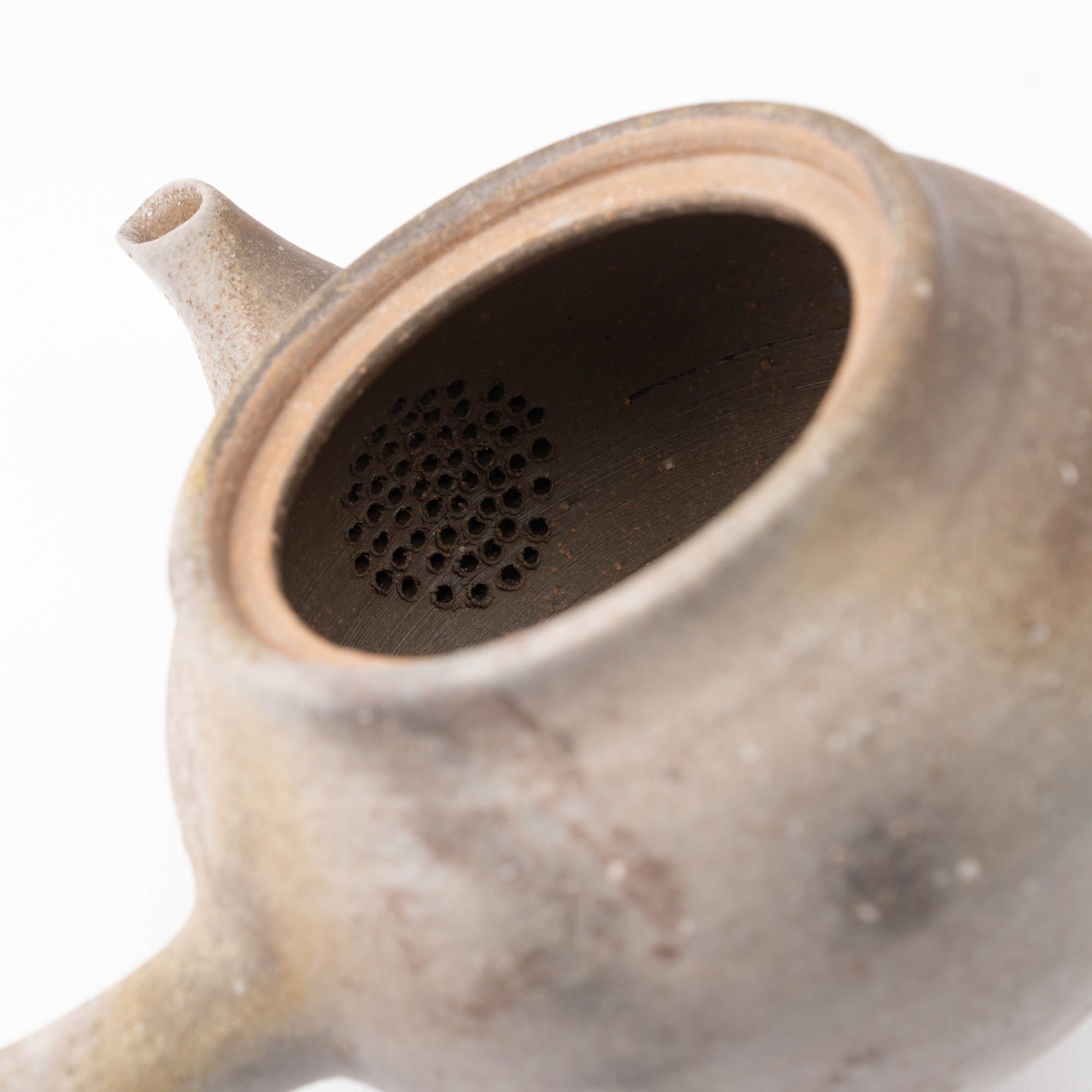
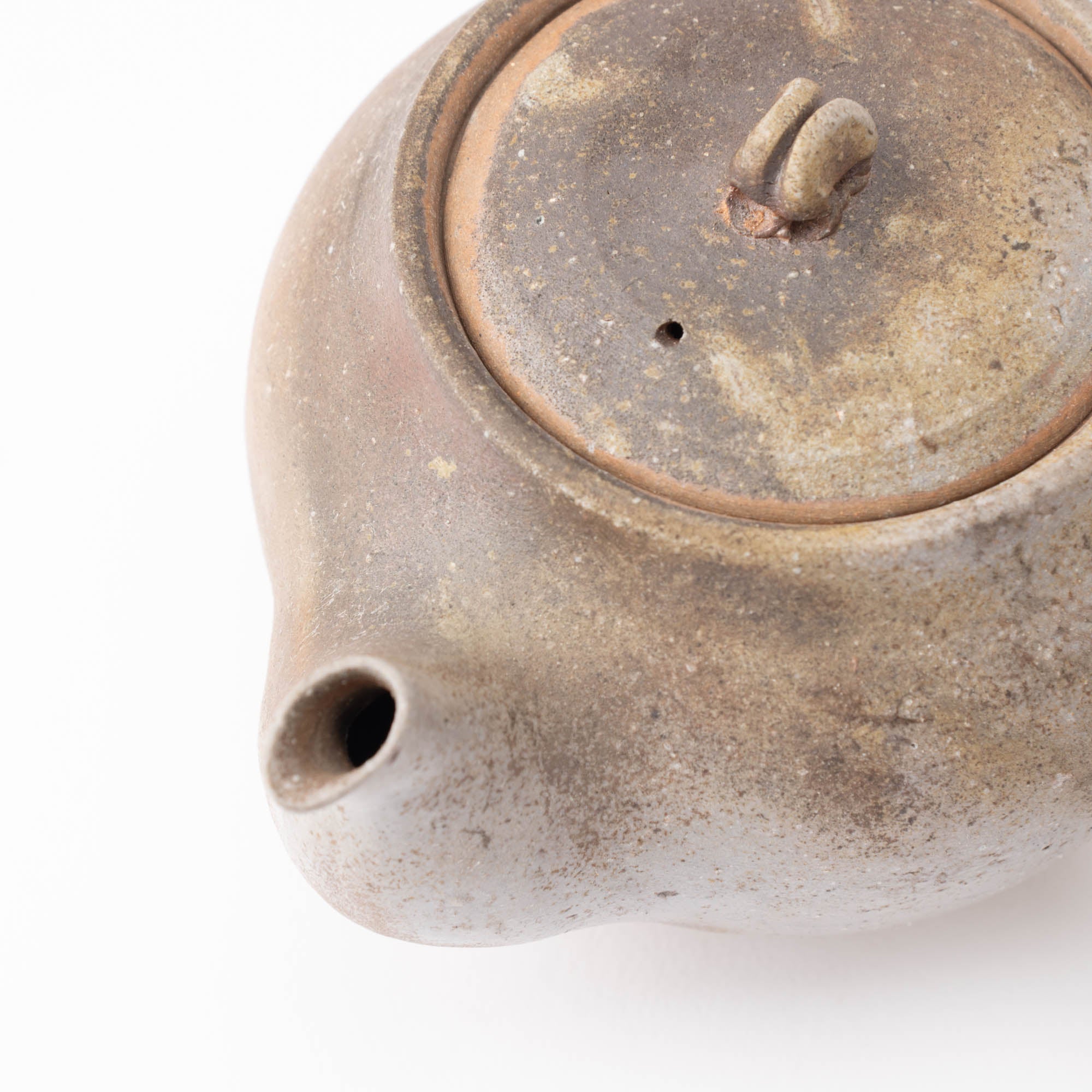
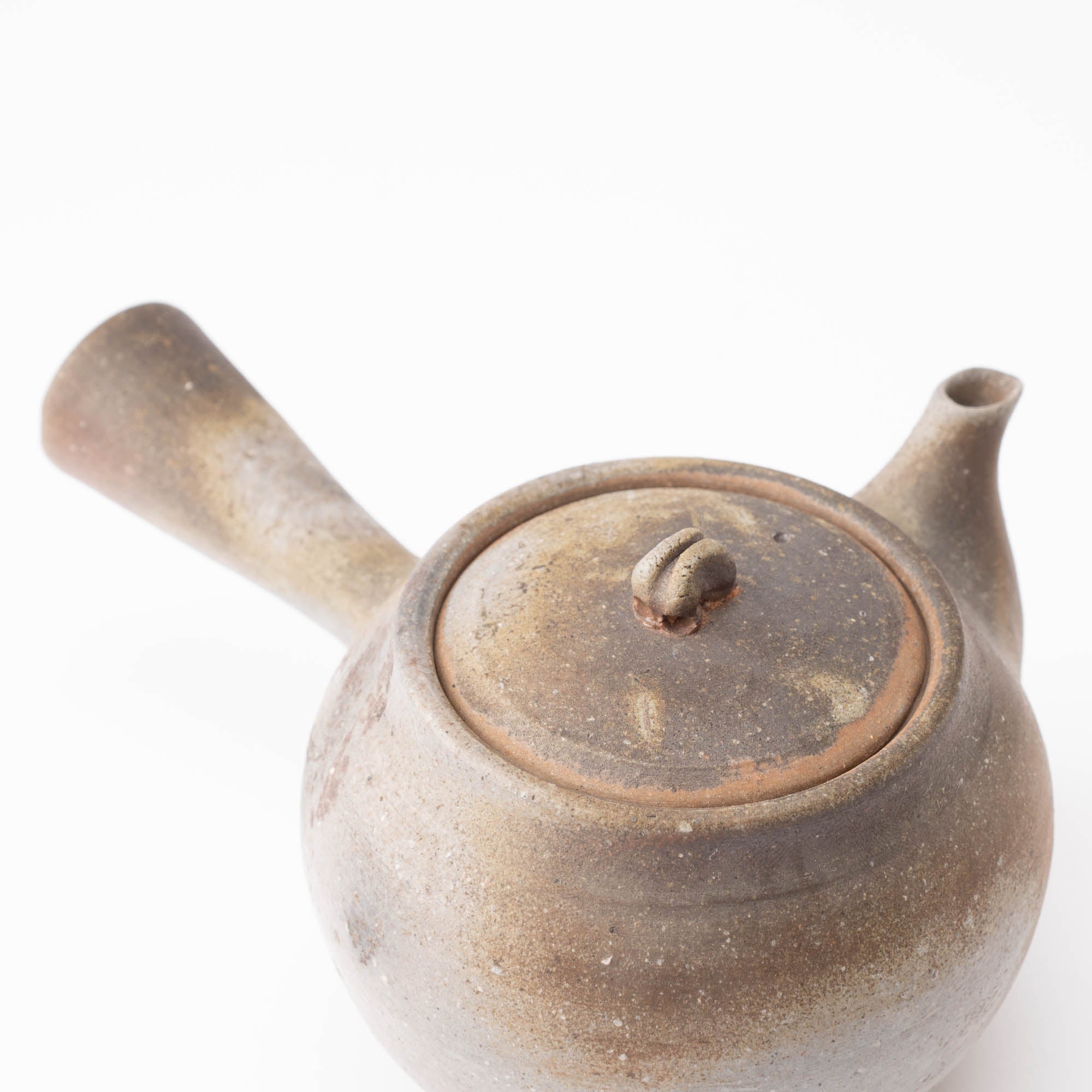
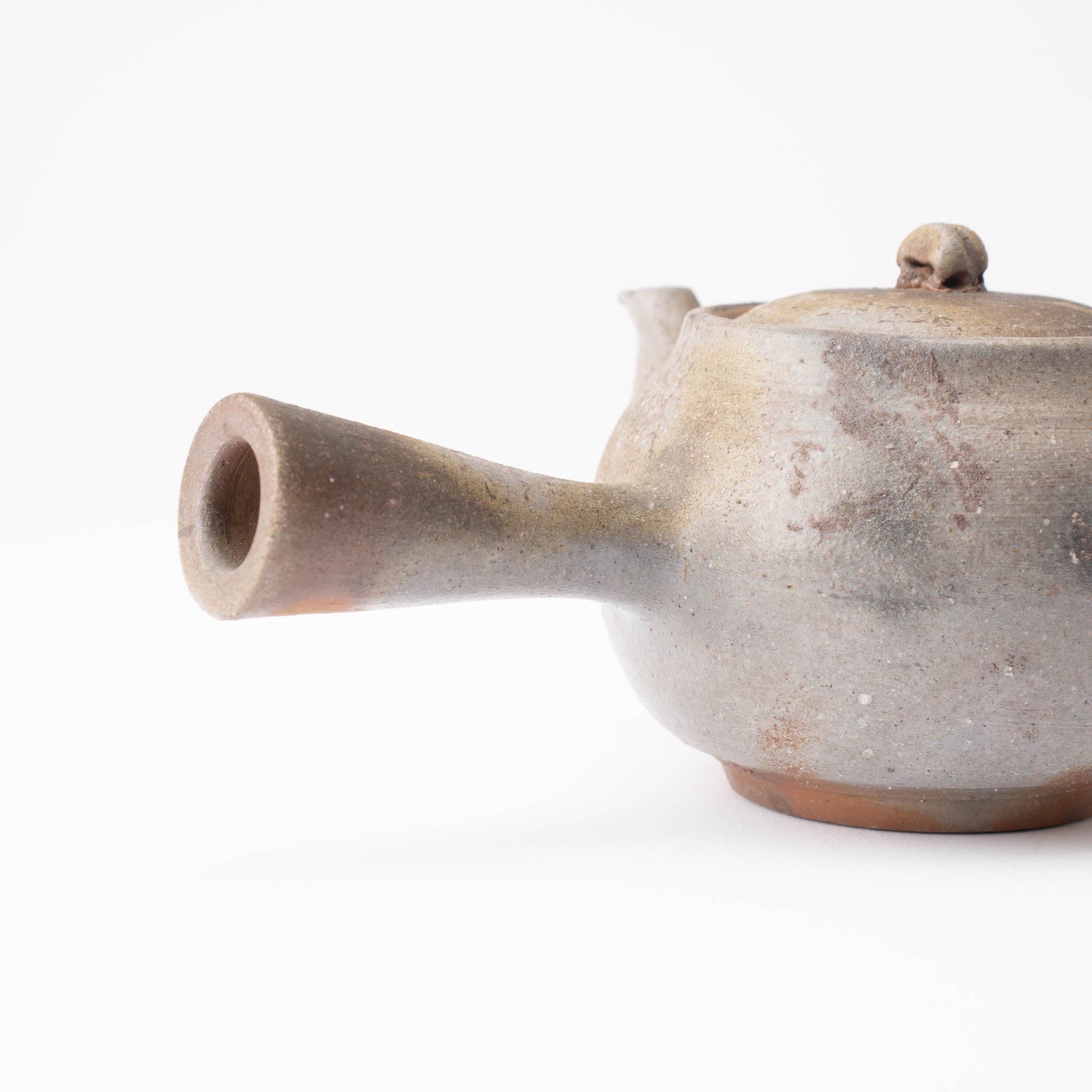
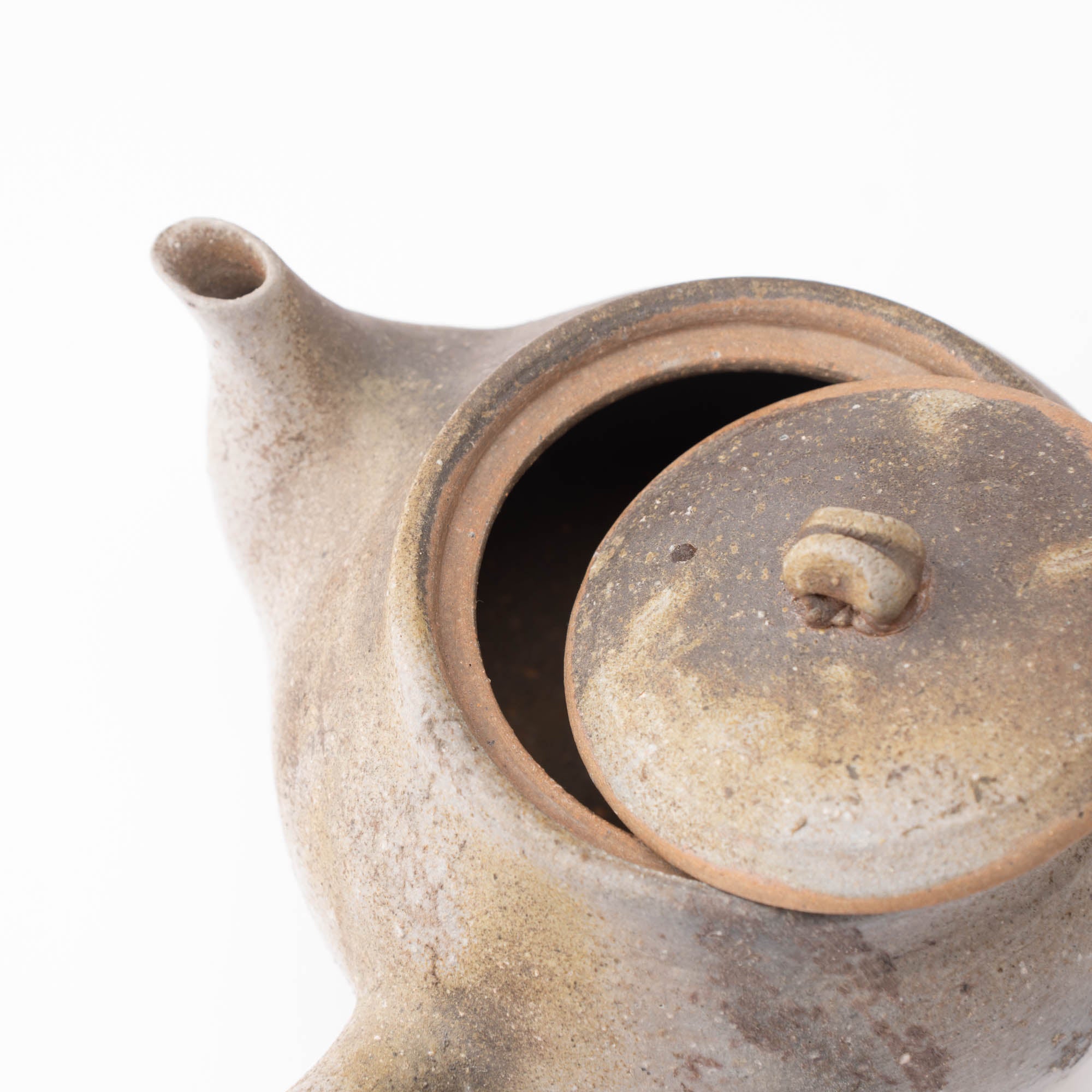
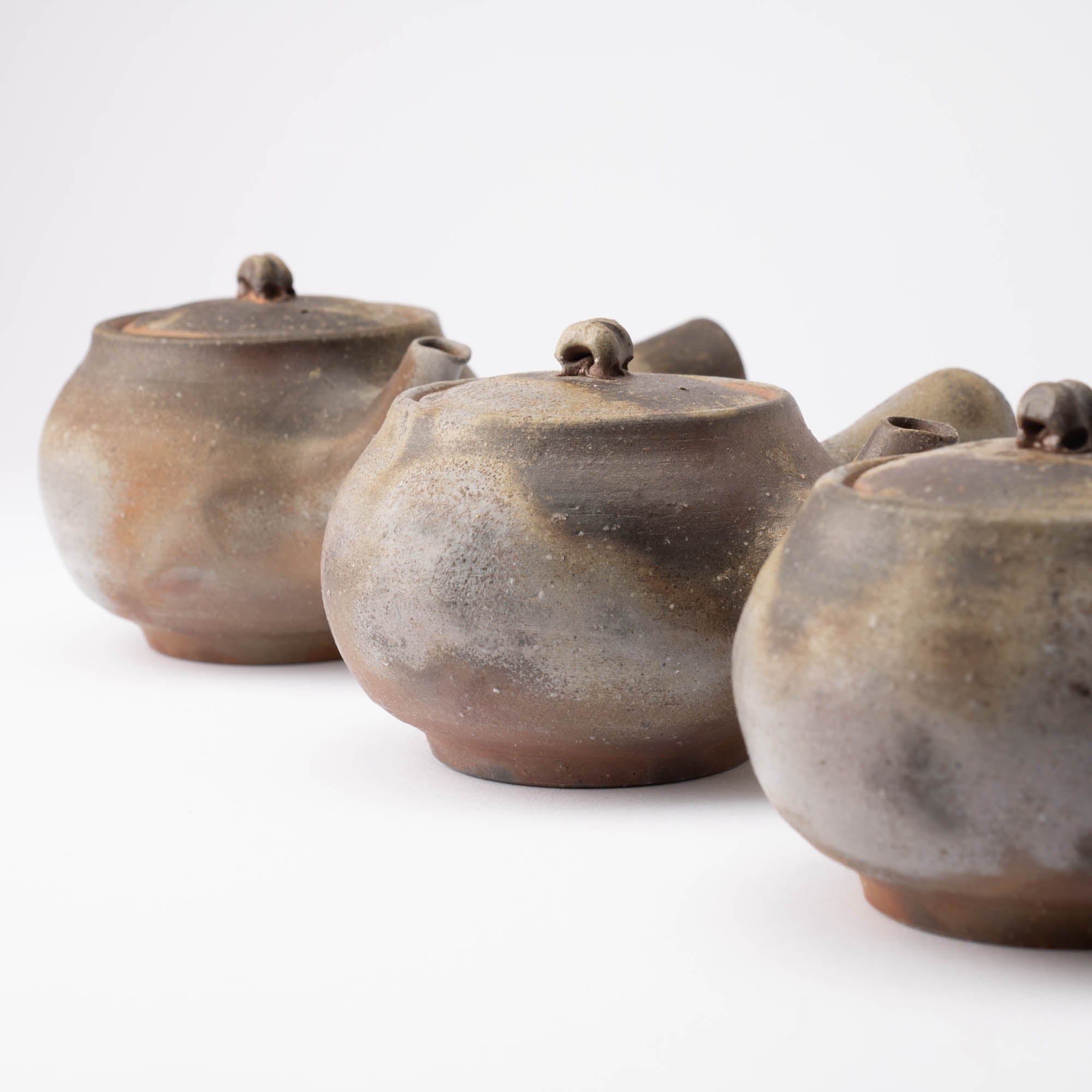
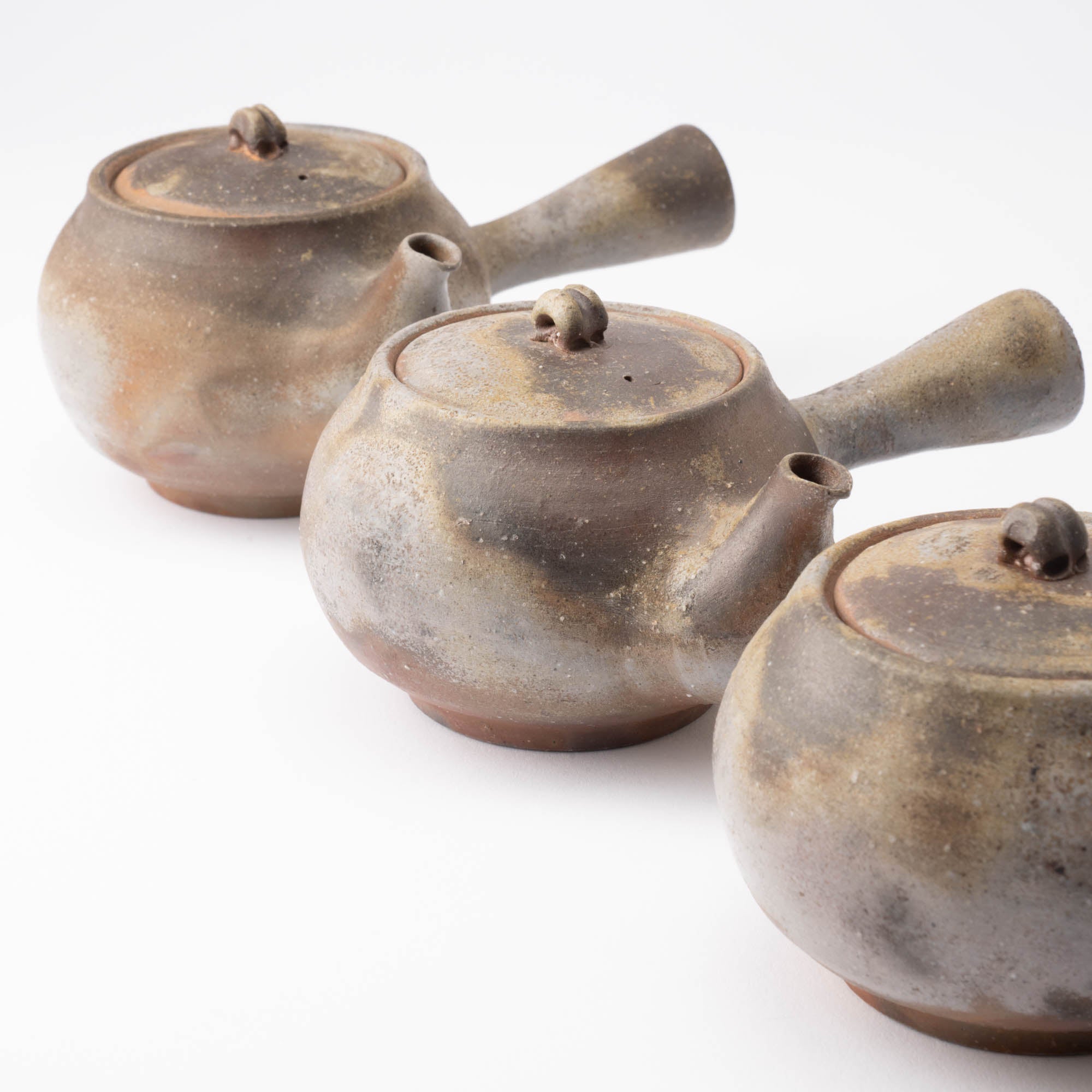
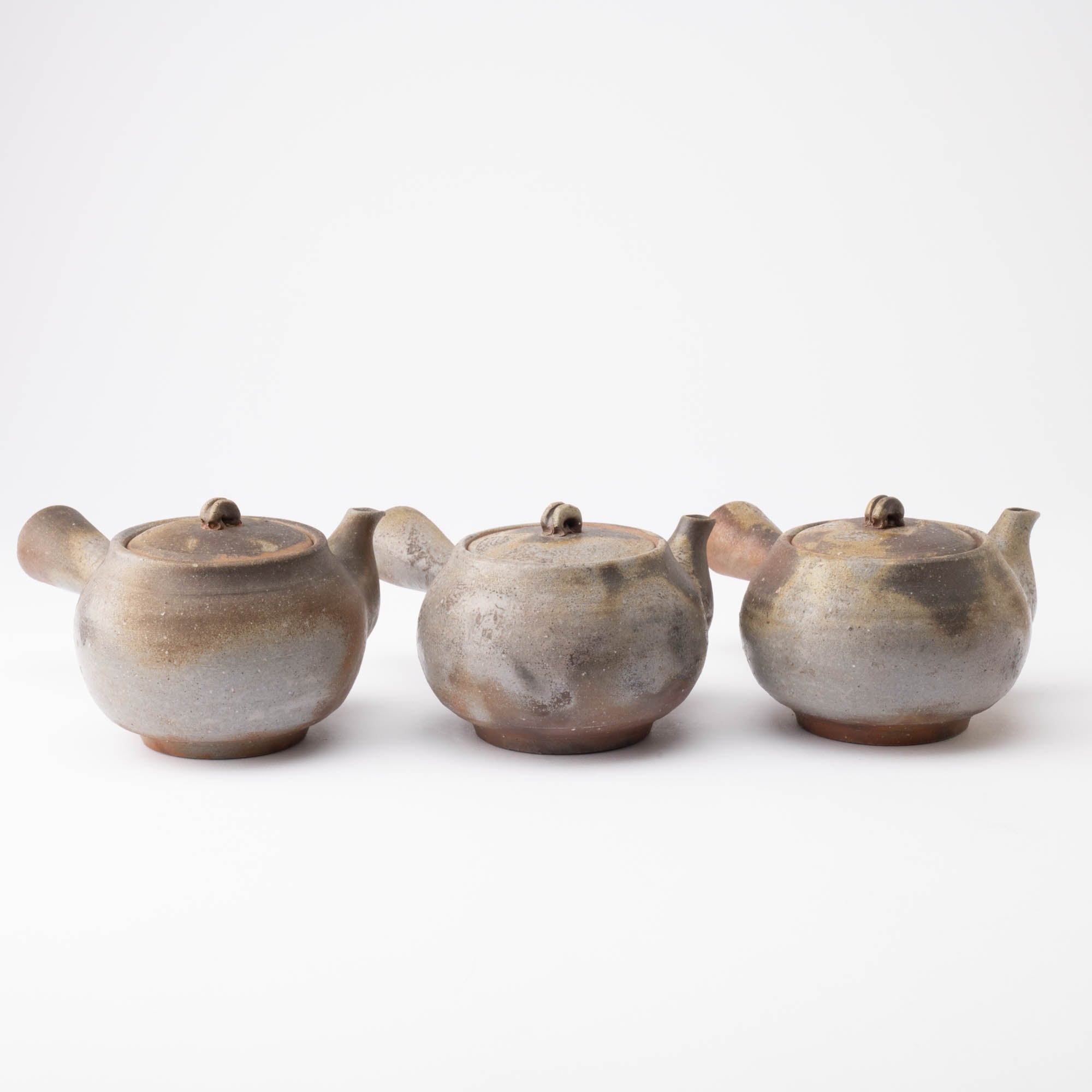


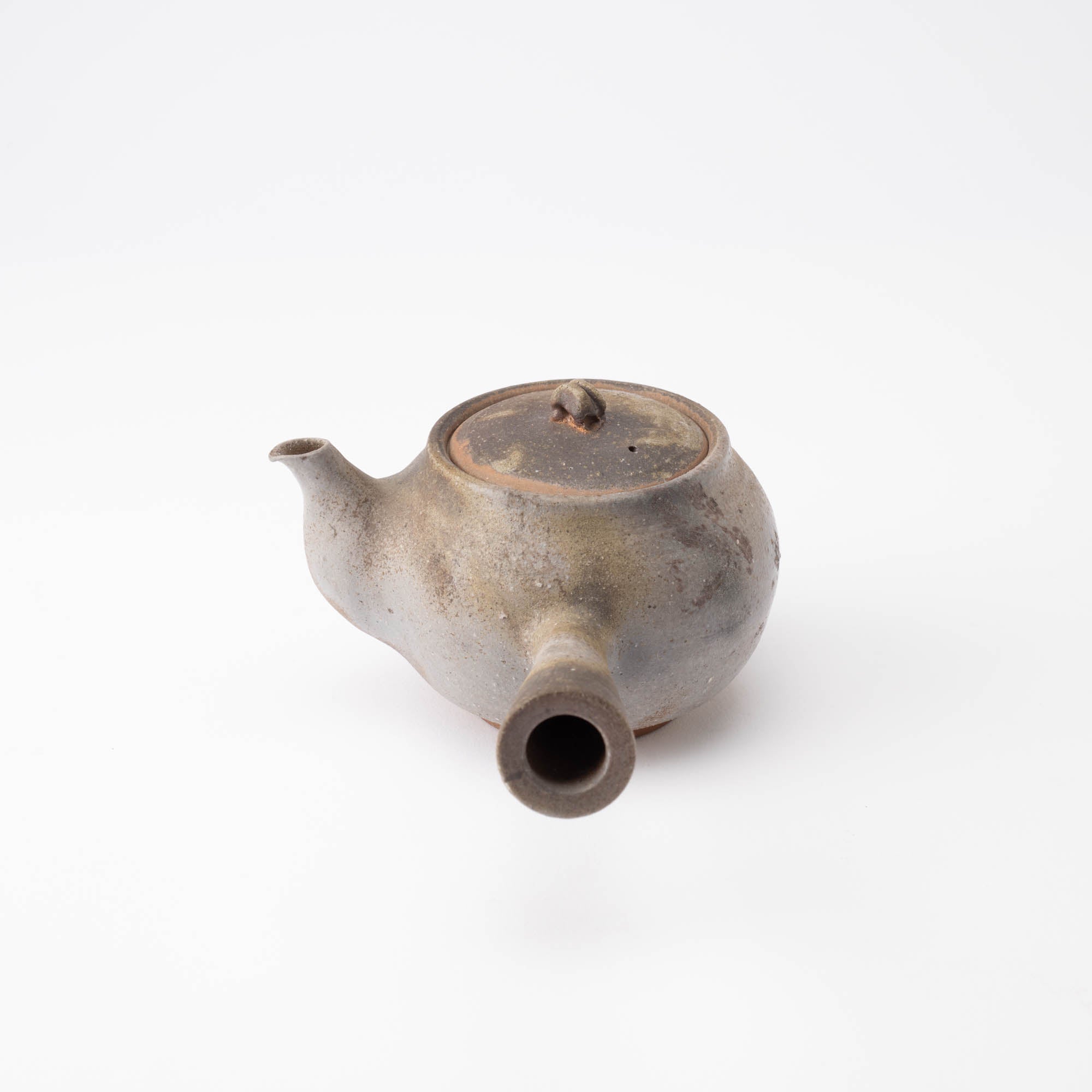
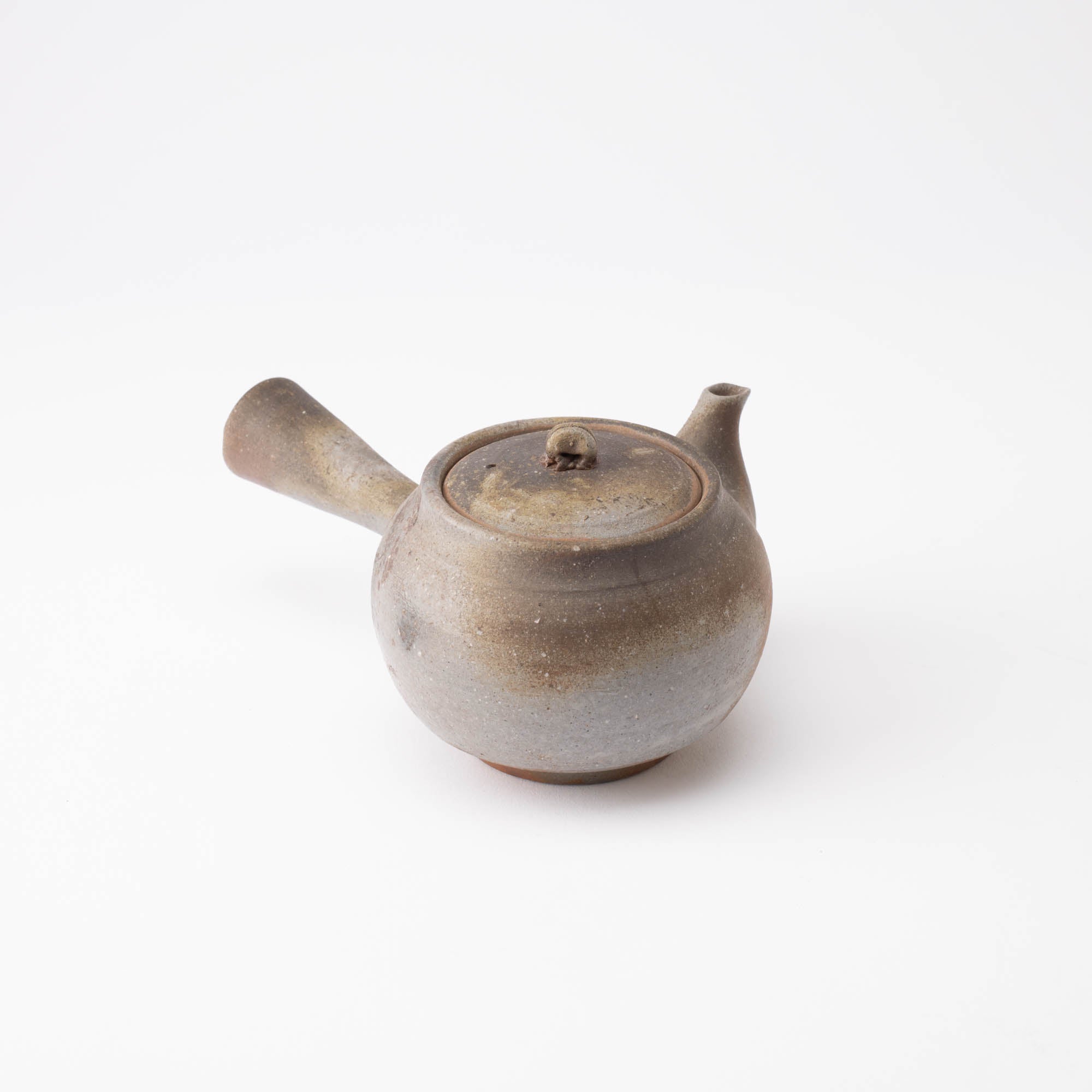

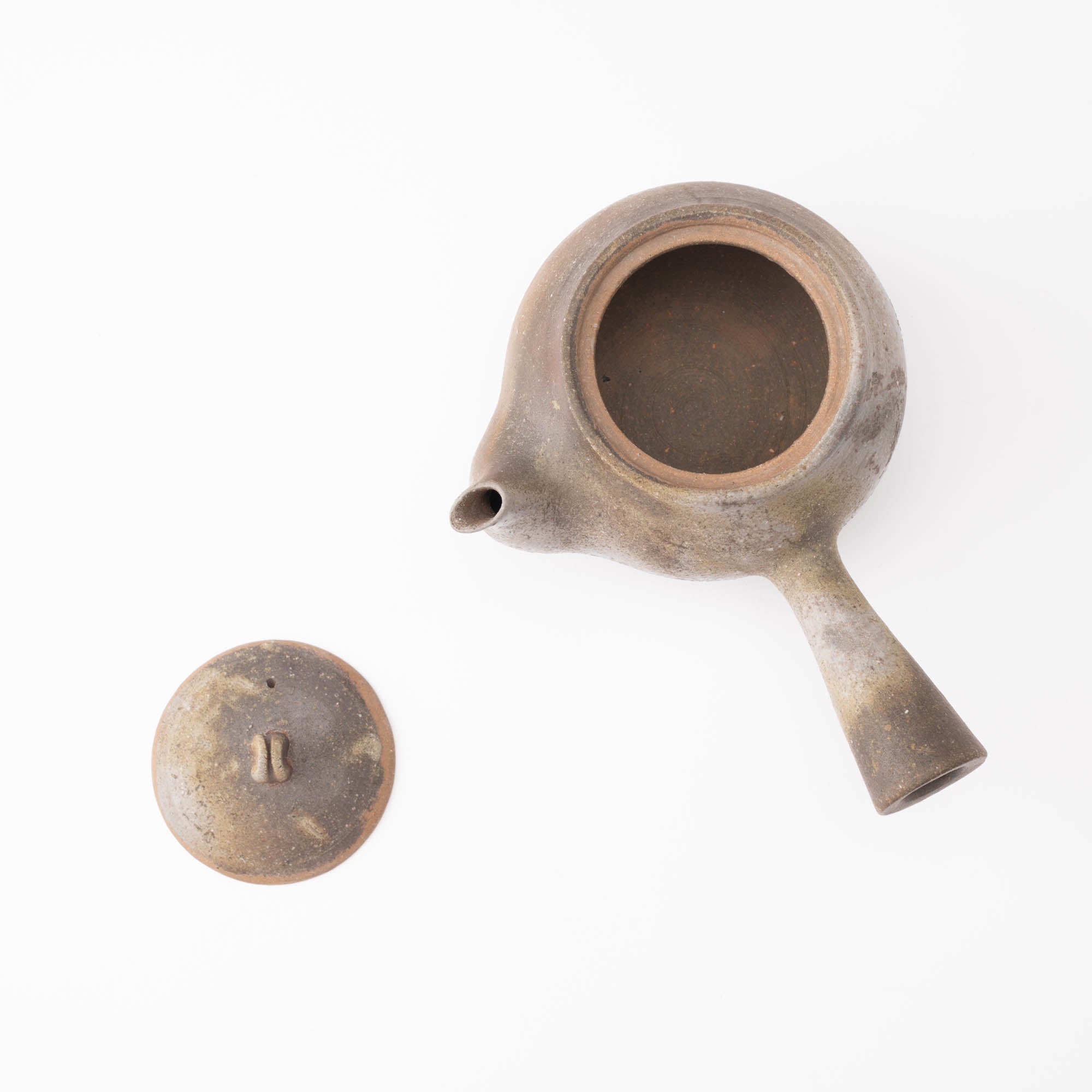
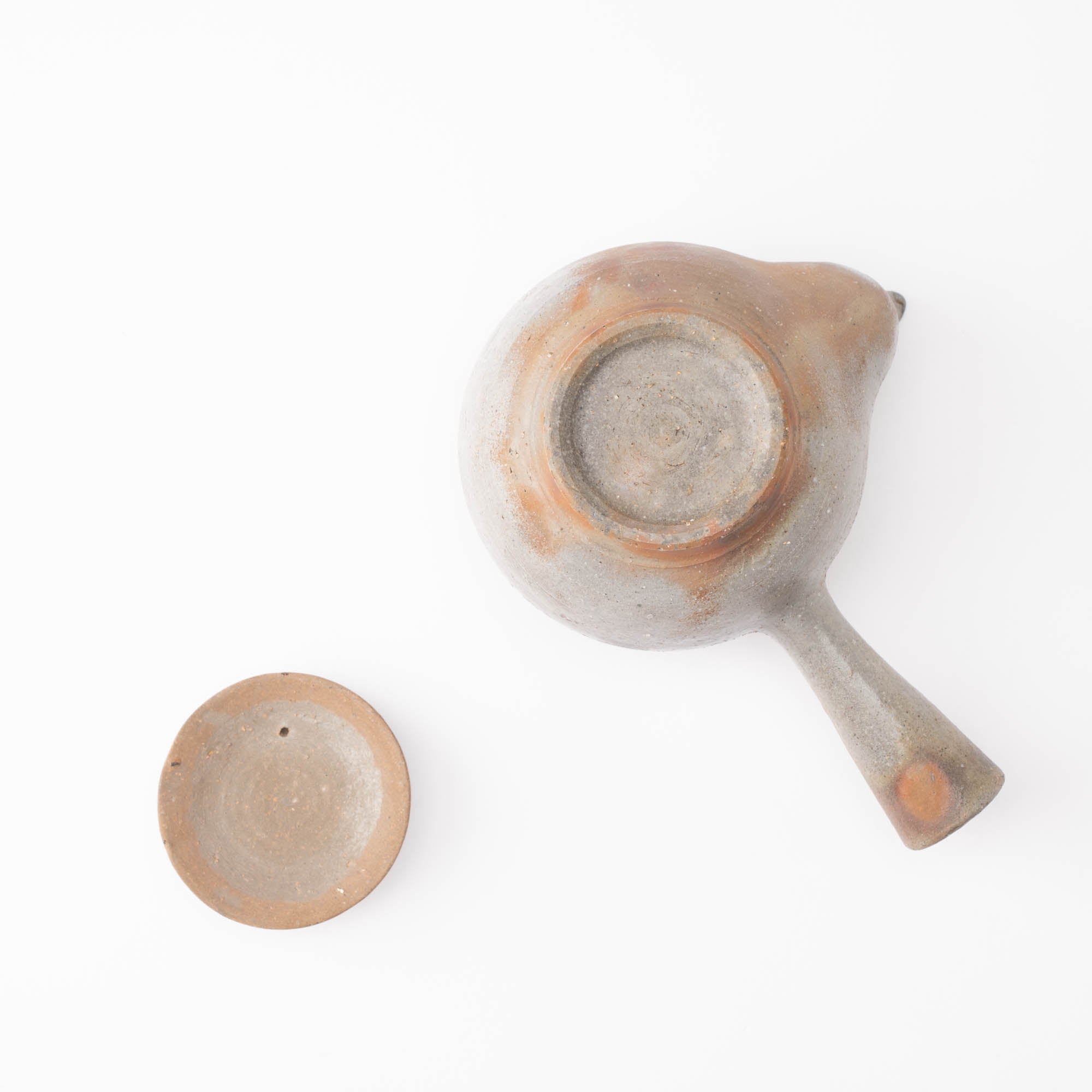
Sangiri Japanese Teapot
Estimated Shipping Widget will be displayed here!
This is a Bizen ware teapot with a pattern called "sangiri". The coarse texture, exquisite colors and patterns produced by the kiln's flames is a remarkable example of Bizen ware, "the art of clay and fire".
The "san" in sangiri refers to the wall inside the kiln. The work placed on the side of the wall where ash tends to accumulate is covered with ash from the pine wood, and the part of the work not directly exposed to the fire reacts with the ash, turning it grayish brown or blackish brown. Each firing results in a different pattern, making each piece a unique work of art.
The capacity is 300 ml (10.1 oz), which is enough to fill 2 cups of tea.
DETAILS
| Quantity | 1 |
| Size | D 12cm (4.7 in) x H 11 cm (4.3 in) |
| Capacity | 300ml (10.1 fl oz) |
| Material | Stoneware |
| Microwave | No |
| Dishwasher | No |
Maker / Brand
Hozan Kiln is a long-established Bizen ware kiln. Located in Imbe, Bizen City, the hometown of Bizen ware, Hozan Kiln is directly descended from the Six Families of Bizen ware potters. For centuries, it has continuously produced masterpieces of tea ceremony utensils, sake cups, and art pieces. The oldest-known piece to bear the fan-shaped ceramic stamp, or brand mark, the kiln still uses today is a large jar dating to the 16th century.
Crafts
Bizen ware is a traditional stoneware produced in the Imbe area of Okayama Prefecture. It is one of the oldest ceramics in Japan, and is made using the yakishime technique, in which pieces are fired at high temperatures without glaze to make them durable and water-resistant.
Bizen ware is called "the art of clay and fire" for the exquisite colors and patterns produced by the kiln's flames, and is characterized by its minimalist, wabi sabi design.
Choose options





















Japanese Teapots
You will certainly be able to find a Japanese teapot that warms your heart among the diverse array of styles in different materials, such as porcelain, stoneware, and cast iron. No matter what type of tea you prefer, create an authentic Japanese tea experience with a teapot that stands out—whether it's for its unique shape, striking color or intricate design.
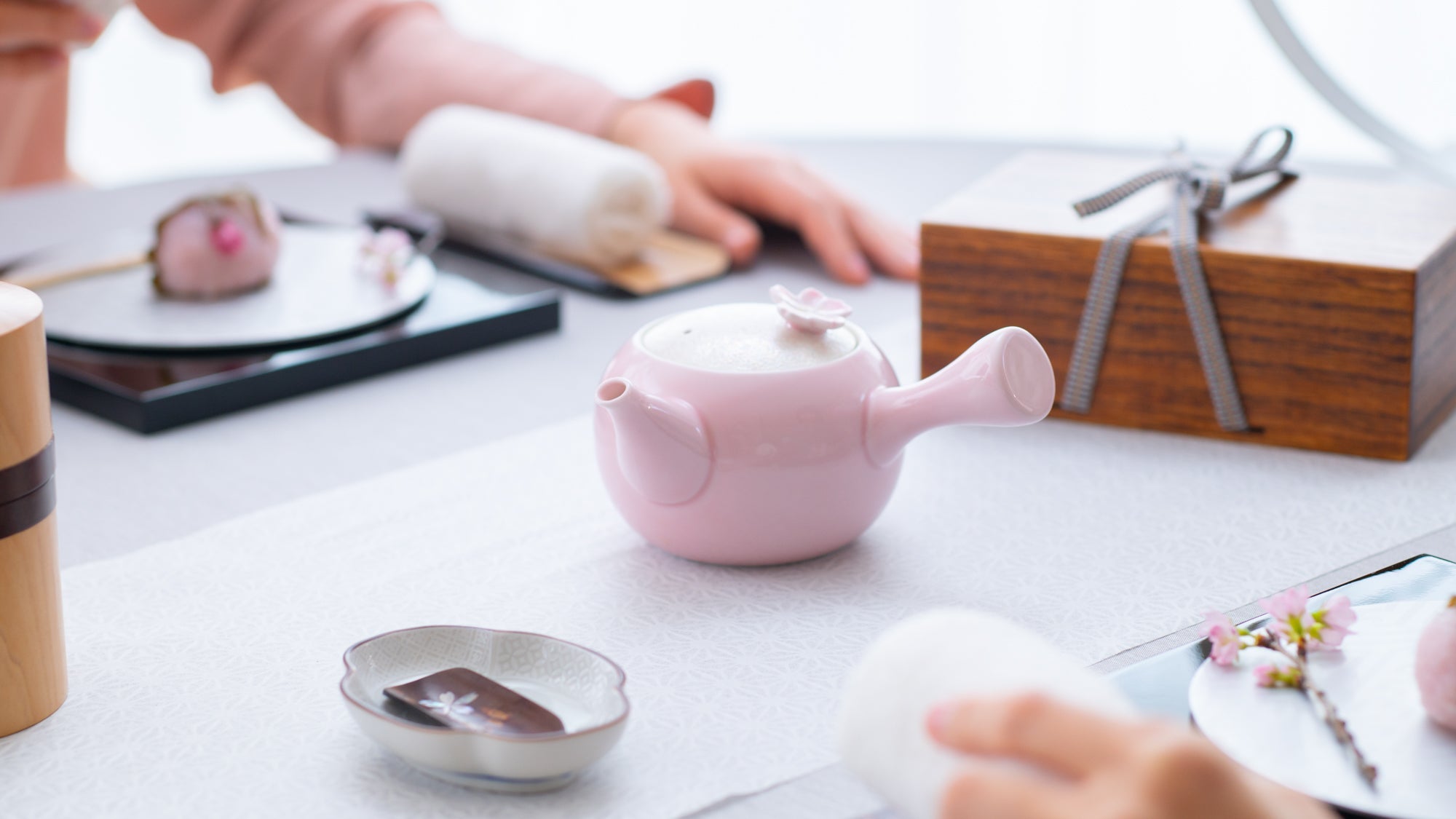
Crafting with Earth and Fire: An Exclusive Look at Kiln Unloading
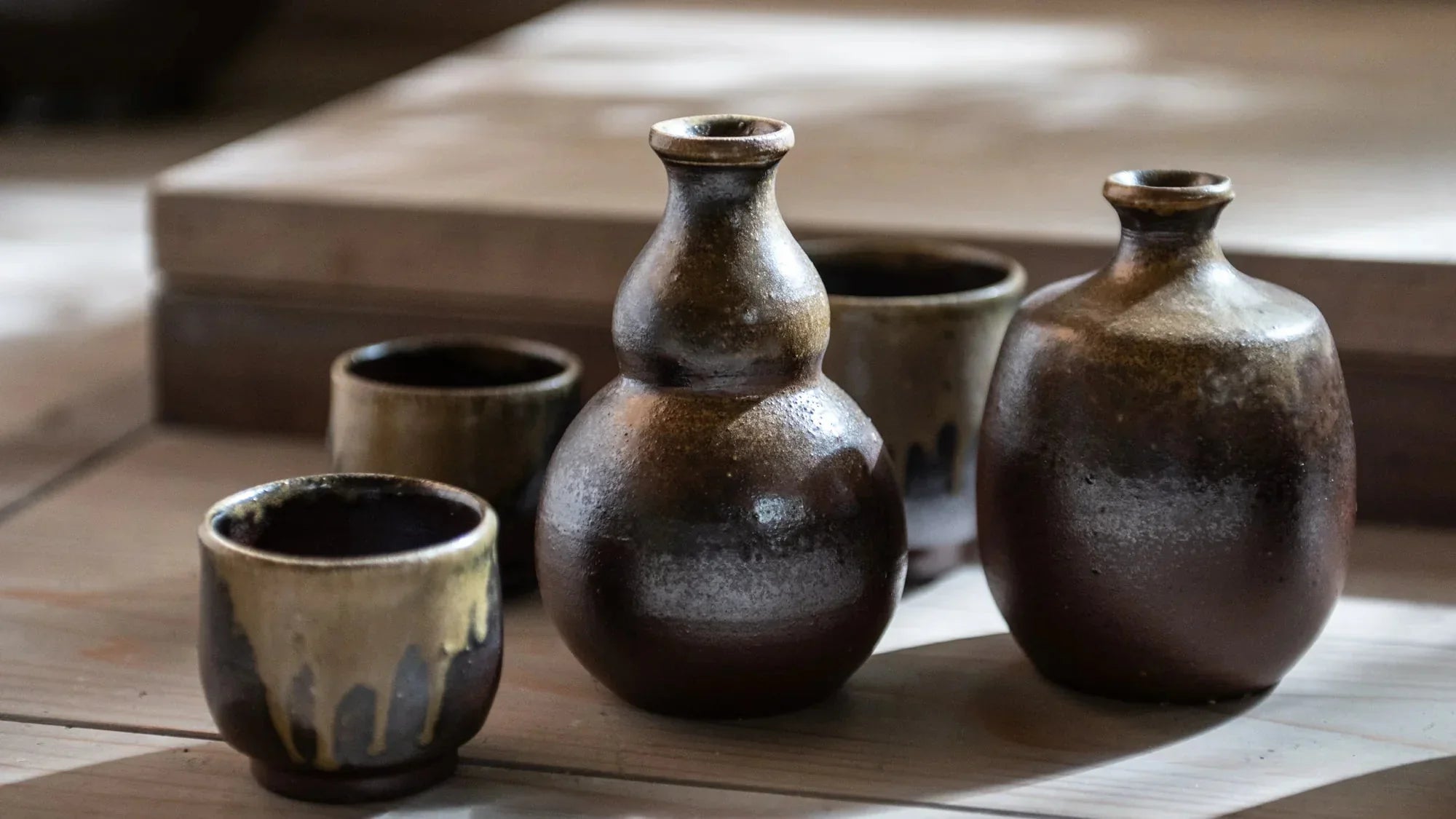
Guide to Japanese Tea Sets
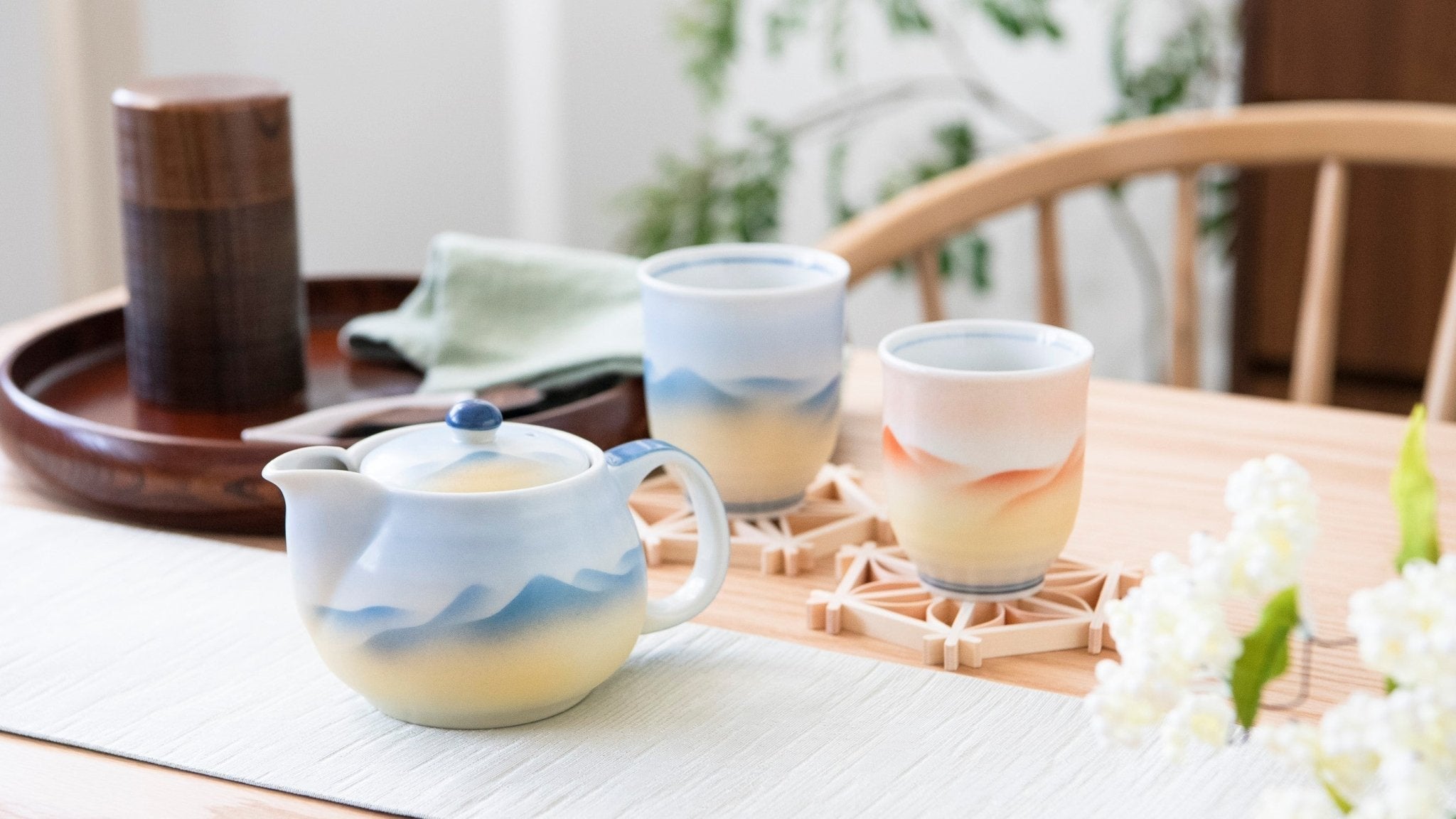
Teishoku Style Lunch for Two with Arita Porcelain Lab Japan Series for Autumn
